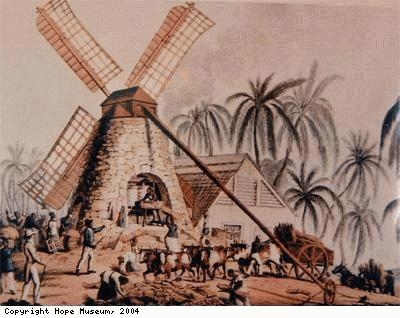John Pinney
Hard times
Pinney may appear to have treated his slaves less brutally than other plantation owners but his primary aim was to grow and sell sugar at a competitive price.
Some slaves were marked by burning or ‘branding’ to show that Pinney was their owner, some with tools made by Peter Eaton of Bristol. Necklocks and wooden blocks, called ‘clogs’, were used as punishment. Slaves who ran away frequently were sent off the island. There was a jail, possibly at the plantation itself, and an overseer with a reputation for cruelty was employed on the estate.
Pinney wrote that managers ‘must not use severity, for I will not suffer any human being, committed by providence to my care, to be treated with cruelty’. Later, in 1800 he ordered his manager not to allow ‘a Negro to be corrected in his presence [the person referrred to was Tom Wedgwood, son of Josiah Wedgwood who campaigned against slavery], or so near for him to hear the whip … point out the comforts the Negroes enjoy beyond the poor in this country (England) … show him the property they possess … by this means he will leave the island possessed with favourable sentiments’. Pinney was not forbidding punishment. If it was necessary, it should be done where Wedgwood could not see or hear it. Wedgwood would then return to Britain with a good opinion of plantation life at a time when the debate on ending the slave trade was reaching a climax.

 Links with Nevis
Links with Nevis Mountravers
Mountravers Pero
Pero Back to Bristol
Back to Bristol The abolition movement
The abolition movement Hard times
Hard times Treatment of slaves
Treatment of slaves Life as a plantation owner
Life as a plantation owner The young Pinney
The young Pinney Charles Pinney
Charles Pinney

